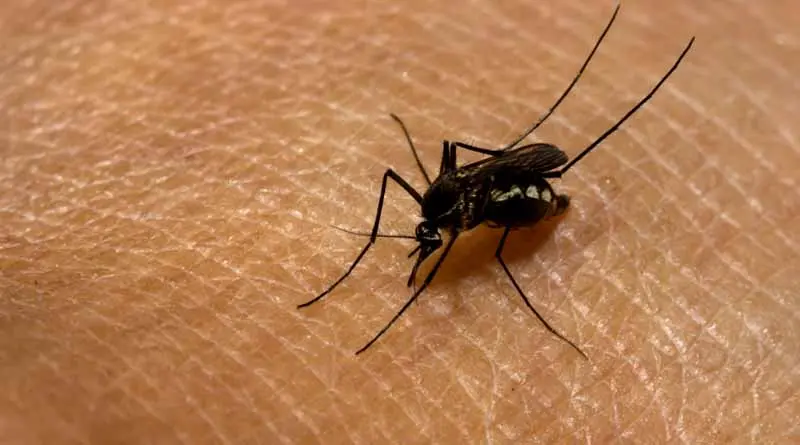
What’s the Best Way to Deal with Mosquitoes?
As the sun sets over the horizon, casting a golden glow that touches everything with a warm light, there emerges a less welcome element of the wilderness—the incessant buzz and bite of mosquitoes. Whether you’re fishing by the river, setting up camp in the woods, or simply enjoying an evening by a lakeside, these tiny creatures can turn a moment of peace into a scratchy ordeal. So, it begs the question: What’s the best way to deal with mosquitoes?
The Challenge of Mosquitoes in the Outdoors
Mosquitoes are more than just nuisances; they can be vectors for serious diseases like malaria, Zika virus, West Nile virus, and dengue fever. Their ability to ruin outdoor activities is unparalleled, and anyone who spends time in nature must consider how to manage their presence. The obstacles are numerous—from selecting the right repellents to setting up physical barriers—and the effectiveness of your strategies can make or break your outdoor experience.
Understanding Pest Control in Depth
Choice of Repellents: The market offers a wide variety of mosquito repellents, each tailored for different situations and preferences. DEET, a chemical repellent, is known for its effectiveness and longevity, making it suitable for areas with high mosquito activity. However, it can be harsh on plastics and synthetic fabrics, which requires consideration depending on your gear. Picaridin, another synthetic option, offers similar protection without the potential for material damage and is generally more pleasant to use due to its lack of odor.
Those who avoid synthetic chemicals prefer natural oil-based repellents, such as lemon eucalyptus oil, because they offer a more environmentally friendly option. Their effectiveness can vary, but they are a viable choice for those with sensitive skin or health concerns regarding DEET or picaridin. The length of your outdoor activities, the quantity of mosquitoes in your area, and personal health factors like allergies or skin sensitivity should all play a role in your decision.
Physical Barriers: Mosquito nets and specially designed clothing are essential physical barriers that prevent mosquitoes from making contact with your skin. Mosquito nets are particularly critical when sleeping in infested areas. They should be free of holes and gaps and can be treated with permethrin for added protection. When using nets, ensure they are securely tucked under your sleeping mat or bag to prevent mosquitoes from entering.
Long clothing is another effective barrier. Treated clothing, especially those infused with permethrin, adds a layer of protection that repels and kills mosquitoes on contact. The challenge is ensuring consistent use—any exposed skin can be a target for bites. Additionally, in hot and humid climates, wearing long clothing can be uncomfortable, so balancing protection with comfort is necessary.
Environmental Control: Managing the environment to disrupt mosquito breeding is a proactive approach to reducing their populations. Mosquitoes typically breed in standing water, which can be found in ponds, marshes, or even small amounts of water accumulated in discarded containers. Regularly draining sources of standing water, like birdbaths, rain gutters, and plant saucers, can significantly reduce the number of mosquitoes in an area. In camping or living areas, it’s also useful to incorporate landscaping practices that encourage drainage and reduce water accumulation.
Implementing the Best Solutions
1. Effective Use of Repellents: Application of repellents is as important as the type of repellent used. I always ensure thorough coverage, reapplying according to guidelines, especially after swimming or sweating. For areas with intense mosquito activity, a higher concentration of DEET or picaridin may be necessary, whereas for lighter exposure, a natural repellent or a lower concentration could suffice.
2. Strategic Clothing Choices: My clothing strategy in mosquito-prone areas is deliberate. I choose light-colored garments, as mosquitoes are attracted to darker shades. The clothing is loose-fitting to prevent mosquitoes from biting through the fabric. Ensuring all clothing items, including socks and hats, are treated with permethrin, maximizes my protection against bites.
3. Mosquito Nets and Spatial Repellents: At night, I rely on a well-secured mosquito net to ensure uninterrupted sleep free from bites. For communal areas, spatial repellents like thermacell devices create a mosquito-free zone, using allethrin, a synthetic copy of a natural insecticide found in chrysanthemum flowers, to clear the space of mosquitoes. These devices are particularly effective for stationary activities such as eating or relaxing at the campsite.
Through careful planning and implementation of these strategies, dealing with mosquitoes becomes a manageable part of outdoor adventures, allowing you to focus more on enjoying the natural beauty around you and less on the pests that inhabit it.
Essential Resources and Tools
- Repellents Containing DEET or Picaridin: Ensure they are EPA-approved for safety and efficacy.
- Permethrin-Treated Clothing: is available for purchase or you can treat them yourself before the trip.
- Mosquito Nets: Ensure they are intact and large enough to fit over your sleeping setup.
- Spatial Repellents: Devices like thermacell, or coils, particularly useful in stationary settings like campsites.
- Portable Standing Water Management Tools: Such as larvicides if you are staying in one location for an extended period.
Dealing with mosquitoes is an integral part of managing your experience in the great outdoors. By combining the right repellents, appropriate clothing, and environmental controls, you can significantly reduce the annoyance and risk posed by these persistent pests. Remember, the best strategy is one that integrates personal protection with proactive site management. As I sit here by the fire, the hum of a mosquito coil at my side, I’m reminded of the resilience required to enjoy the wild—always aware, always prepared. Whether you’re a seasoned explorer or a weekend warrior, understanding and implementing these strategies can ensure that your time outdoors is memorable for the adventure, not the bites.






